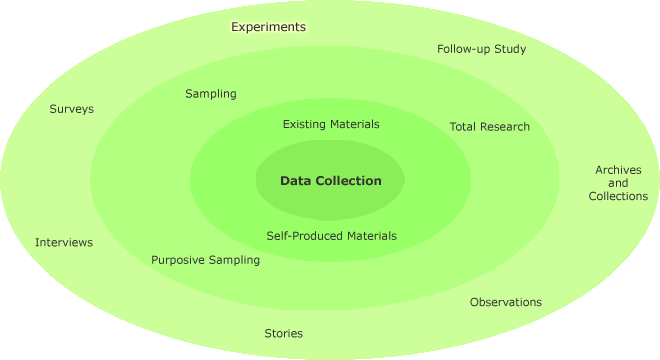Experiments

You can collect research data by conducting an experiment on the research phenomenon. You can choose an experiment, as the data collection method, when your research aims are either to explore the immediate influence of one phenomenon on another or to observe causal relationships between phenomena and the various factors influencing them. In order to be able to indicate the causal relations as explicitly as possible, you need to control all the factors, which might give confusing results. You can carry out experiments using either an experiment design or a quasi-experiment design.
Experiment design:
You organise the experiment / test situation so you can observe the effects and causality of the phenomena by controlling all factors related to them, and by randomly allocating the participants or subjects to a control group and experiment groups. You will apply a scientific treatment to the experimental group and a placebo treatment to the control group. You will then compare and analyse the differences of the effect of the scientific treatment against the effect of the placebo treatment.
Quasi-experiment design:
This is the same as the experiment design but you will not include the random allocation. You can carry out experiments in several ways. The format of a reasonable experiment depends on your research aim and topic. You need careful planning and preparation to carry out a successful experiment.
Your aims, research strategy and the nature of the experiment will influence whether or not you can analyse the results using either quantitative methods of analysis or qualitative methods of analysis. Please note that any form of statistical testing requires quantitative analysis.
Read more on experiments from the links below:
Experiment. Wikipedia, The Free Encyclopedia.
Design of Experiments. Wikipedia, The Free Encyclopedia.
Shuttleworth, Martyn, 2008. Conducting an Experiment. Experiment Resources.
